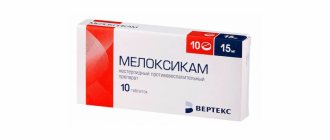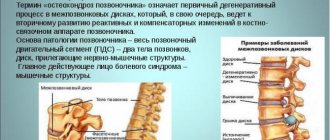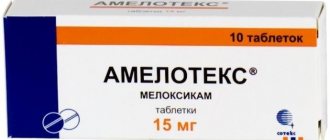Glutoxim®
Glutoxim® has an immunomodulatory, hemostimulating, detoxifying, hepatoprotective effect, suppresses the drug resistance of tumor cells to anthracycline antibiotics, alkylating agents; helps overcome drug resistance of Mycobacterium tuberculosis
to isoniazid, associated with the katG (catalase-peroxidase gene) and inhA (enol-ACP reductase gene) genes.
Glutoxim® potentiates the effect of doxorubicin on tumor cells, chemotherapy agents (isoniazid, rifampicin, rifabutin, cycloserine, capreomycin, levofloxacin, cationic antimicrobial peptide catalecidin) on Mycobacterium tuberculosis
.
The immunomodulatory effect of the drug Glutoxim® is due to a receptor-mediated effect on calcium-dependent signaling pathways of macrophages, which leads to an increase in:
— survival and functional capacity of tissue macrophages;
— exocytosis of submembrane granules with intracellular parasitic forms of Mycobacterium tuberculosis
;
— activity of lysosomal enzymes;
— formation of reactive oxygen species;
— absorption and death of microorganisms;
- secretion of cytokines: interleukin 1, interleukin 6, tumor necrosis factor, interferons, erythropoietin, interleukin 2; cationic antimicrobial peptides - defensins, catalecidins.
The hemostimulating effect of the drug Glutoxim® is due to a receptor-mediated increase in bone marrow hematopoiesis: the processes of erythropoiesis, lymphopoiesis and granulocytomonocytopoiesis. The effect on progenitor cells of different lines of blood cells is mediated by the functioning of the MAP and inositol kinase systems, leads to an increase in the stability of differentiating hematopoietic cells, and restores their sensitivity to the action of endogenous hematopoietic factors.
The detoxifying and hepatoprotective effects of the drug are due to a receptor-mediated increase in the expression of enzymes of the second phase of detoxification of xenobiotics, including glutathione reductase, glutathione peroxidases, glutathione-S-transferase, glucose-6-phosphate dehydrogenase, heme oxygenase-1, an increase in the intracellular level of reduced glutathione, providing protection to cellular structures from the toxic effects of radicals.
Glutoxim® has a direct inhibitory effect on the activity of the multidrug resistance factor of tumor cells - the protein P-glycoprotein (Pgp), which determines the resistance of tumor cells to the action of chemotherapy, including anthracycline antibiotics and alkylating drugs.
Glutoxim® initiates the transformation reaction of isoniazid, a prodrug, into a pharmacologically active form, isonicotinic acid, which has a bacteriostatic effect on Mycobacterium tuberculosis
, which makes it possible to overcome drug resistance
of Mycobacterium tuberculosis
caused by negative transformation of the katG (catalase-peroxidase gene) and inhA (enol-ACP reductase gene) genes.
Glutoxim® stimulates the processes of exocytosis of vesicles from macrophages with intracellular parasitic microorganisms, including Mycobacterium tuberculosis
, ensuring their removal from the pharmacological refuge and making them available for the action of antibacterial drugs, including isoniazid, rifampicin, rifabutin, cycloserine, capreomycin, levofloxacin.
Glutoxim® enhances the secretion of cationic peptides - defensins and catalecidins by macrophages, stimulates their absorption by Mycobacterium tuberculosis, determining the indirect antibacterial effect of the drug.
When does psoriasis start?
It is difficult to pinpoint exactly when the disease began. Typically, a patient consults a doctor if he already has grounds for complaints. However, in 75% of cases, psoriasis affects people during puberty - the time of puberty. According to German experts, psoriasis is divided into two types: the first appears at the age of about 20 years and is somewhat more severe, the second occurs around 50 years. There is a possibility that psoriasis will begin in youth if one of your relatives has already been diagnosed with it. But, unlike other hereditary diseases, the nature of the transmission of psoriasis from generation to generation is not obvious, therefore it is impossible to predict with certainty whether any family members will get sick and who exactly.
So you can become a victim of psoriasis at any time, from infancy to old age.
Dermatology
2. Korsunskaya I.M., Nevozinskaya Z., Zakharova A.B. et al. Experience in the treatment of lichen planus with Glutoxim. Russian Journal of Skin and Venereal Diseases 2008; 1; 44-46.
3. E.V.Pismennaya, L.V.Silina, N.G.Filippenko, L.L.Pismenny, V.M.Dovgal. Evaluation of the effectiveness of the use of the immunomodulator Glutoxim in the complex therapy of children suffering from psoriasis, using the method of visualization of multidimensional objects. Clinical dermatology and venereology, 2008, 4, pp. 79-84.
4. S.S. Avetikyan / Features of the clinic, course and treatment of psoriasis in men. // Abstract of Ph.D., M. 2008, 19 p.
5. Antushevich A.A. Prevention and treatment of complications of radiation therapy for cancer of the oropharyngeal region (clinical and experimental study). Abstract...candidate of medical sciences. St. Petersburg, 2008.
6. Zofia Niewozinska. /Optimization of pharmacotherapy of lichen planus.// Abstract of Ph.D. M.2007. 22 p.
7. I.M. Korsunskaya, E.V. Dvoryankova, S.S. Oleinik, E.V. Piruzyan and others. Features of psoriasis treatment in patients with chronic viral hepatitis. Russian Journal of Skin and Venereal Diseases. 2007, No. 1
8. L.V. Minaeva. Experimental assessment of the role of changes in the glutathione system in the implementation of side cytotoxic effects of repeated administration of cyclophosphamide. Abstract. M. 2007, 178 p.
9. S.E.Zelentsova /Complex pharmacotherapy of severe forms of psoriasis, taking into account biochemical and immunological parameters.// Abstract of Ph.D., M. 2007, 20 p.
10. I.M. Korsunskaya, E.V. Dvoryankova, S.S. Oleinik, E.V. Piruzyan, I.V. Verkhoglyad, T.V. Shashkova, Yu.A. Andryushkova. Therapy of psoriasis in patients with chronic viral hepatitis. XIII Russian National Congress “Man and Medicine”, 2006 p. 176
11. Sotnikova N.Yu., Kudryashova A.V., Gromova O.A. The effectiveness of glutoxim in the treatment of patients with atopic dermatitis against the background of herpes infection. Doctor.Ru No. 3 2006, pp. 2-6
12. A.Yu.Putintsev, N.I.Syuch, S.S.Oleynik, E.V.Piruzyan, I.M.Korsunskaya, E.M.Konstantinov. Changes in the immunological status of patients with psoriasis and its correction. Collection of abstracts from the conference “New technological platform for biomedical research,” Rostov-on-Don, October 16-17, 2006.
13. L.V.Silina, E.V. Pismennaya Clinical and laboratory evaluation of the effectiveness of using the immunomodulator glutoxim in complex therapy of children suffering from psoriasis. Pediatrics No. 3 2006, pp. 60-64
14. K.P.Vasilenko, E.B.Burova, V.G.Antonov, N.N.Nikolsky. Oxidized glutathione causes activation of the epidermal growth factor receptor and ERK1,2 marker kinases Tsitologiya 2006, volume 48, no. 6, pp. 500-506
15. Novikov A.I., Korotkiy N.G., Okhlopkov V.A. et al. The use of glutoxim as a drug to accompany photochemotherapy of psoriasis vulgaris. Abstracts of reports of the XII National Congress “Man and Medicine” 2005; 490-491.
16. Giuseppe Filomeni, Katia Aquilano, Patrizia Civitareale, Giuseppe Rotilio, Maria R. Ciriolo Activation of c-Jun-N-terminal kinase is required for apoptosis triggered by glutathione disulfide in neuroblastoma cells * Free Radical Biology & Medicine 39 (2005) 345– 354
17. I.M. Korsunskaya, M.M. Reznikova, L.T. Togoeva, S.S. Avetikyan. New in pathogenetic therapy of psoriasis. Doctor.Ru No. 3, 2005, pp. 20-24
18. THEM. Korsunskaya. Information letter on the use of Glutoxim in dermatology. Moscow. TsTP FHF Russian Academy of Sciences. 2005.
19. E.B. Burova, K.P. Vasilenko, V.G. Antonov, N.N. Nikolsky /Transactivation of the epidermal growth factor receptor by oxidized glutathione and its pharmacological analogue Glutoxim in A431 cells//. 2005. DAN, 2005, volume 404, No. 1, pp. 1-3
19. Antonov V.G., Antushevich A.E., Burova E.B., Vasilenko K.P. Possible mechanism for the modulating effect of the drug Glutoxim on the regulatory effect of cytokines. Cytokines and inflammation, 2005, 2; 73.
20. N.N. Gladkova, M.A. Demidova. Study of the antiallergic activity of Glutoxim. Verkhnevolzhsky Medical Journal, 2004, T.2, no. 5-6, p. 42-43
21. Pravdina O.V. Clinical and morphological assessment of the effectiveness of the drug Glutoxim in the complex therapy of patients with psoriasis. Dissertation...candidate of medical sciences. Novosibirsk, 2004
22. V.A.Okhlopkov, A.I.Novikov, A.V.Kononov, Yu.A.Andryushkova, I.V.Ose. Long-term results of combination therapy for patients with psoriasis including the drug Glutoxim. Russian Journal of Skin and Venereal Diseases. 2003, No. 8
23. 13. A.I. Novikov, A.V. Kononov, V.A. Okhlopkov, O.V. Pravdina, G.D. Bratukhina, R.V. Gorodilov, A.A. Chermoshentsev. Clinical testing of the effectiveness of Glutoxim in the complex therapy of patients with guttate psoriasis. Russian National Congress “Man and Medicine”: collection of abstracts. – M., 2003
24. I.M. Korsunskaya, M.M. Reznikova, A.Yu. Putintsev, S.S. Avetikyan / Experience in using the drug Glutoxim in dermatology. Attending physician—2003. - No. 4. P.78 -79
25. 12. A.I. Novikov, A.V. Kononov, V.A. Okhlopkov, etc. The effectiveness of glutoxim in the complex therapy of patients with guttate form of psoriasis. Russian Journal of Skin and Venereal Diseases. 2003, No. 1, pp. 38-41.
26. Grebneva N.N., Tonsheva L.N., Sergeeva I.G., Krinitsyna Yu.M. The use of Glutoxim in the complex therapy of acantholytic pemphigus. Mater. First Russian Congress of Dermatovenerologists. SPb.2003, vol.1
27. K.N. Suvorova, I.M. Korsunskaya, A.Yu. Putintsev. Some features of complex therapy of severe forms of psoriasis. // Russian Journal of Skin and Venereal Diseases. 2002 No. 6, p.31-32
28. Ishida-Yamamoto F., Nanaka H., Nakane H. et al. Programmed cell death in normal epidermis and loricrin keratoderma. Multiple functions of profilaggrin in keratinization. Journal of Investigative Dermatology 1999; 145—149
29. Tomkova H., Fujimoto W., Arata J. Expression of the bcl-2 homologue bax in normal human skin, psoriasis vulgaris and non-melanoma skin cancer. European Journal of Dermatology 1998; 8: 256-260.
30. Wrone-Smith T. et al. Keratinocytes derived from psoriatic plaques are resistant to apoptosis compared with normal skin. American Journal of Pathology 1997; 111; 255.
31. Miyashita T., Harigai M., Hanada M. Identification of p53-dependent negative response element in the bcl-2 gene. Cancer Research 1994; 54; 3131- 3135.
32. Reed JC Bcl-2 and the regulation of programmed cell death. Journal of Cell Biology 1994; 124; 1-6
33. Soini Y. et al.
Aberrant accumulation of p53 associates with Ki67 and mitotic count in benign skin lesions. British Journal of Dermatology 1994; 131; 514-520. 34. Ostrovskaya P.Yu., Flaks G.A., Korsunskaya I.M. et al. Glutoxim in the complex therapy of urogenital infections in patients of reproductive age (in press).
Genetic predisposition to psoriasis
Hereditary factors play a significant role in the development of this disease - this is indicated by the fact that it is more common in people whose relatives already suffer from psoriasis. The risk of developing psoriasis in a child whose parents are healthy is 12%. When psoriasis is diagnosed in the father or mother, the probability increases - this is already 10-20%. If both parents are sick, the risk for the child will be as much as 50%.
Scientists now believe that the inheritance of psoriasis is multifactorial, that is, several different genes are responsible for the predisposition to this disease, and in order for it to develop, several different external or internal factors are needed. Let's look at which ones exactly.





